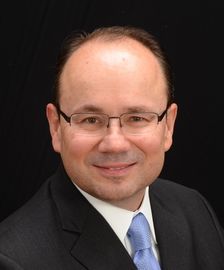Publication
Article
Urology Times Journal
Pushing past the pandemic’s impact on prostate cancer screening
Author(s):
"Cancer doesn’t take a holiday or vacation, and it doesn’t care about a pandemic. Our efforts to reduce deaths from prostate cancer through screening and early detection must continue," writes Michael S. Cookson, MD, MMHC.
Michael S. Cookson, MD, MMHC

As of mid-September 2022, COVID-19 has infected 613 million individuals and resulted in 6.53 million deaths worldwide. COVID-19’s impact in the US came on strong in spring 2020, and its surge and resurgences affected all aspects of life. The mandatory public shutdowns, shelter-at-home policies, and loss of health care workers with a simultaneous increase in demand for critical care created a stress never before experienced. And although things are now returning to “normal,” it is clearly a “new normal” with many challenges ahead. In health care, there is an acute awareness that our work flow and our workforce have changed, and we must adjust our practices in order to deliver the quality of care that our patients deserve. However, during the height of the pandemic, there was an almost hibernation from health care, particularly involving screening and preventive care.
One of the still-to-be-determined effects of the pandemic will be the reverberations from a reduction in prostate cancer screening. The director of the National Cancer Institute has noted concern about an increase in cancer mortality caused by a delay in screening.1 Several reports have documented a reduction in prostate-specific antigen (PSA) screening and testing during this time frame. One large administrative database estimated the overall deficit in prostate cancer screening in the US over this period will affect 1.6 million men.2 In another database from central Massachusetts, PSA testing decreased by 34% in March 2020, 78% in April 2020, and 53% in May 2020.3 In addition, there are some indications that the decrease in screening disproportionately affected Black men.4 These reports (and others) are concerning and may foreshadow a shift in prostate cancer presentation in the next few years.
There is precedent for the consequences of a reduction in prostate cancer screening. In October 2011, the United States Preventive Services Task Force (USPSTF) issued a draft guideline discouraging PSA-based screening for prostate cancer (grade D recommendation).5 In the year following, prostate cancer diagnoses declined 28% because of the recommendation against PSA screening. The consequences of this reduction in screening started to become apparent. Following the USPSTF recommendation, not only was there a substantial decline in PSA screening, there was a reported a shift toward higher grade and stage disease at the time of diagnosis in the years that followed.6 In fact, the incidence of metastatic prostate cancer rose significantly in the US. These trends were (and are) concerning, particularly for young men with high-grade disease who likely benefit the most from early detection and definitive prostate cancer treatment.
I hope we can recapture gains made before the pandemic and claw our way back from this temporary pause in regularly scheduled health care programming. For urologists and primary care providers, it is going to require an increase in messaging and a more creative approach to PSA-based screening and prostate cancer awareness. We will need to reach the men (and their influencers) with the thoughtful shared decision-making message of prostate cancer screening. However, we will have to try harder and work smarter to reach this target audience of men who were already a bit sluggish in coming forward. We hope the gains made in PSA screening on the back side of the pandemic will continue well beyond our September Prostate Cancer Awareness campaign. Cancer doesn’t take a holiday or vacation, and it doesn’t care about a pandemic. Our efforts to reduce deaths from prostate cancer through screening and early detection must continue.
References
1. Sharpless NE. COVID-19 and cancer. Science. 2020;368(6497):1290. doi:10.1126/science.abd3377
2. Chen RC, Haynes K, Du S, Barron J, Katz AJ. Association of cancer screening deficit in the United States with the COVID-19 pandemic. JAMA Oncology. 2021;7(6):878-884. doi:10.1001/jamaoncol.2021.0884
3. Epstein MM, Sundaresan D, Fair M, et al. Trends in breast and prostate cancer screening and diagnostic procedures during the COVID-19 pandemic in central Massachusetts. Cancer Causes Control. 2022;33(10):1313-1323. doi:10.1007/s10552-022-01616-4
4. Kelkar AH, Zhao J, Wang S, Cogle CR. Impact of the COVID-19 pandemic on colorectal and prostate cancer screening in a large U.S. health system. Healthcare (Basel). 2022;10(2):264. doi:10.3390/healthcare10020264
5. Barocas D, Mallin K, Graves AJ, et al. Effect of the USPSTF grade D recommendation against screening for prostate cancer on incident prostate cancer diagnoses in the United States. J Urol. 2015;194(6):1587-1593. doi:10.1016/j.juro.2015.06.075
6. Eapen RS, Herlemann A, Washington SL 3rd, Cooperberg MR. Impact of the United States Preventive Services Task Force ‘D’ recommendation on prostate cancer screening and staging. Curr Opin Urol. 2017;27(3):205-209. doi:10.1097/MOU.0000000000000383

Newsletter
Stay current with the latest urology news and practice-changing insights — sign up now for the essential updates every urologist needs.




























